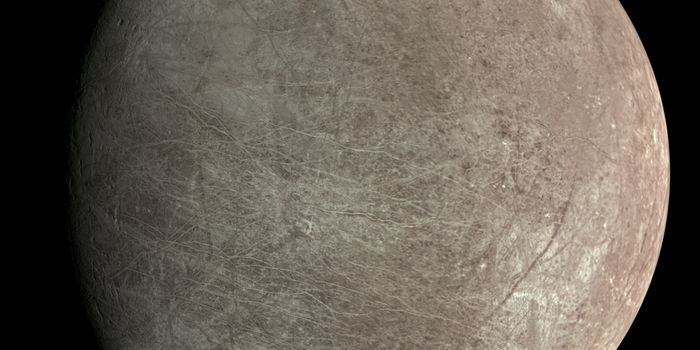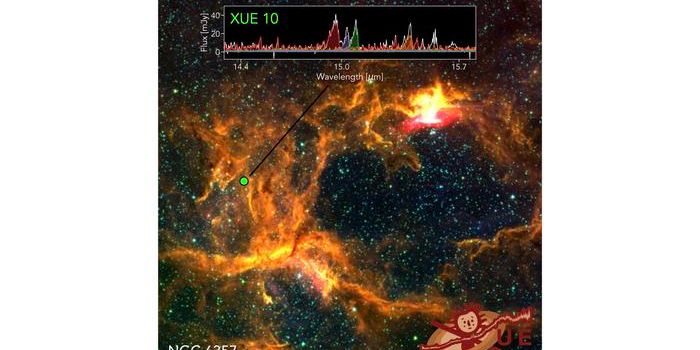Neuroscience
Penn Physics/Medicine Receives $2.8 Million Grant for Stroke Research
AUG 13, 2014 12:00 AM PDT
Share
Air Pollution Could Be a Sign of Intelligent Life
 The search for extraterrestrial intelligence (SETI) has mostly been conducted by trying to detect electromagnetic radiation from alien civilizations. But, a new approach to detecting intelligent life on distant planets may yield results when the James Webb Space Telescope (JWST), a large infrared telescope with a 6.5 -meter primary mirror, is launched in 2018. This approach involves looking for signs of pollution from alien civilizations. Currently we can look for life-indicating gases such as oxygen and methane, but these can come from simple microbes. Advanced life forms may produce contaminants such as two types of chlorofluorocarbons (CFCs) (CF4 and CCl3F), which it is expected the JWST could detect if atmospheric levels were 10 times those on Earth. Unlike some other gases, CFCs are only produced in significant quantities by human activities, not natural ones. They destroy the Earth's ozone and have been banned by much of the world.
The search for extraterrestrial intelligence (SETI) has mostly been conducted by trying to detect electromagnetic radiation from alien civilizations. But, a new approach to detecting intelligent life on distant planets may yield results when the James Webb Space Telescope (JWST), a large infrared telescope with a 6.5 -meter primary mirror, is launched in 2018. This approach involves looking for signs of pollution from alien civilizations. Currently we can look for life-indicating gases such as oxygen and methane, but these can come from simple microbes. Advanced life forms may produce contaminants such as two types of chlorofluorocarbons (CFCs) (CF4 and CCl3F), which it is expected the JWST could detect if atmospheric levels were 10 times those on Earth. Unlike some other gases, CFCs are only produced in significant quantities by human activities, not natural ones. They destroy the Earth's ozone and have been banned by much of the world.But, this new approach, suggested by a team of researchers at the Harvard-Smithsonian Center for Astrophysics, is limited. JWST can only detect pollutants on an Earth-like planet circling a white dwarf star, which is what is left when a star like the Sun dies. These conditions would maximize the ability to detect the chemicals. Looking for pollution on an Earth-like planet circling a sun-like star would require a telescope more advanced than the state-of-the-art JWST. Although scientists believe that there are probably white dwarfs with planets, none have been found so far.
In a paper, which has been has been accepted for publication in The Astrophysical Journal, the researchers, in order to reduce required exposure times and the associated cost, outline this approach for observing exoplanets for signs of pollution:
Identify Earth-size exoplanets orbiting white dwarfs.
After approximately 5 hours of exposure time with JWST, water vapor, molecular oxygen, carbon dioxide and other indicators of unintelligent life should be detectable if present at Earth-like levels.
While searching for these conventional gases, methane and nitrous oxide should also be detected if they exist at terrestrial levels. Extremely high levels of methane and nitrous oxide could be evidence of runaway industrial pollution.
If biosignatures of unintelligent life are found within the first few hours of exposure time, additional observing time could be used to reduce uncertainties on the concentration of the discovered biosignatures and search for additional, rarer biosignatures. Methane and nitrous oxide can be "subtracted out", and constraints on CF4 and CCl3F can be obtained.
Direct exoplanet detection experiments which look for reflection or thermal emission from the planet could then be used to push constraints on industrial pollutants to terrestrial levels. At the same time, these experiments could search for less exotic biosignatures like the "red edge" of chlorophyll.
Lead author of the paper, Henry Lin, said, "We consider industrial pollution as a sign of intelligent life, but perhaps civilizations more advanced than us, with their own SETI programs, will consider pollution as a sign of unintelligent life since it's not smart to contaminate your own air."
Since some pollutants can last for 50,000 years, detecting them, but not those of short-lived pollutants would indicate that the civilization may have cleaned up its act, or unfortunately, destroyed itself.
It is even conceivable that high levels of pollutants could be intentional. For example they could be produced by beings that want to warm up a planet that is too cold to support life otherwise. Still, even if this were the case their detection would be a sign of intelligent life.
You May Also Like
Loading Comments...








